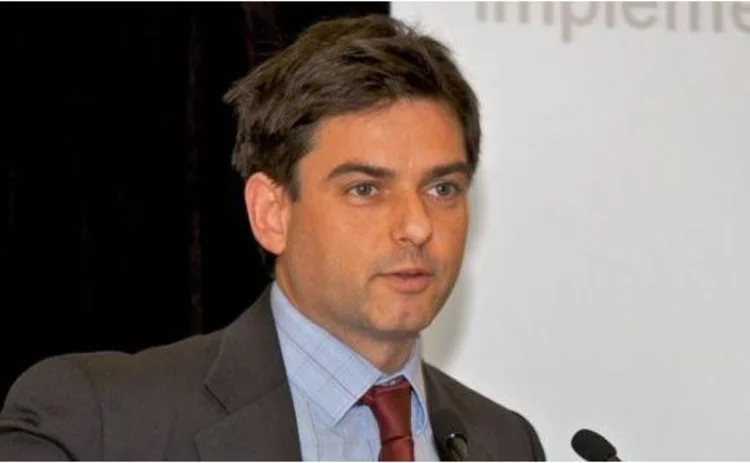
Communication failure not capital behind Fortis collapse

The plunge into state hands and subsequent sell-off of many of the component parts of Belgo-Dutch bancassurer Fortis Insurance was the result of a poor communication strategy, not a lack of capital, according to Fortis’s chief risk officer, Olav Jones.
In September last year, following its disastrous participation in the Royal Bank of Scotland-led acquisition of Dutch bank ABN Amro, Brussels-based Fortis Group was forced into an €11.2 billion (£10.4 billion at today’s exchange rate) bailout by the Benelux governments.
This was the result of significant negative market sentiment concerning Fortis’ potential exposure to collateralised debt obligations (CDOs) and the subsequent calls on funds from wholesale counterparties. But speaking at Life & Pensions’ Solvency II and Risk Management conference in London on October 7, Jones argued that Fortis’ problems were in fact the result of market perception rather than reality.
Responding to a question from the audience over what aspect of Fortis Group’s risk management had been behind its collapse, Jones argued that its exposure to toxic CDOs was far lower than the prevailing market opinion.
“I distinguish between the insurance and banking part of Fortis but, as a member of the group, I was aware of what was going on. But in answer to the question of what was missing from the previous model that led to the group’s problems, one issue was liquidity.
“The importance of this risk was obviously missed, or it was not fully appreciated how extreme liquidity pressures could get. But if you look at Fortis, it did not have a hole in the balance sheet in the same way that is true for AIG, or Lehman Brothers, which both had huge exposures to CDOs.
“I looked at a ranking of all the companies in the world in terms of their subprime writedowns and Fortis was very low, with only about E7 billion written down in total. I can assure you it wrote off everything it could possibly write off because the process with BNP Paribas [which eventually bought part of the group’s Benelux banking businesses] made sure the figures were appropriate.”
According to Jones, Fortis’s available capital resources were more than capable of meeting these writedowns. However, it was unable to communicate this to the market.
“In retrospect, Fortis overstretched itself at the wrong time with regards to the purchase of ABN Amro, and the market moved against it in a way the group didn’t predict. And the capital was easily enough to absorb that. At the end of the day, Fortis has a communication problem because its capital needs were very badly explained.”
François Boissin, an analyst at Exane BNP Paribas, saw some merit in the idea that Fortis
had been felled by market overreaction. “In the end the losses will probably be far less than those expected by the market at the time.”
Citing its long-term capital position, he added government inaction to the list of fatal blows. “The group would probably have had sufficient capital to cover the eventual losses, given the recovery in the market since then. The problem was that other companies in similar positions, such as ING and Aegon, could look to state intervention, but Fortis could not count on the Belgian government.”
However, this did not mitigate the responsibility for failing to meet its short-term responsibilities. “Clearly its capital position was tight and it had a solvency problem. It did not have the available financial resources to cover the losses at that time and no other banks would lend to it. Fortis was technically insolvent.”
Another industry figure, speaking anonymously because of ongoing investigations into the bailout of Fortis by a Dutch court, the Belgian banking regulator and the European Commission, was more damning.
“In reality, what happened was the senior management was in denial about the group’s capital position. Investors were not convinced they could close the funding gap. Of course the communication policy was not great, but eventually the investors stopped believing the management.”
The industry figure continued: “The replacement CEO was clearly an interim figure and could not make the tough decisions. The issue was the capital shortage and at some point it didn’t matter what they said, they needed action. They decided to focus on the retail business and not the investors.”
Boissin was at pains to stress that the company was a reformed institution. “The current Fortis has no relationship to the previous incarnation. The overall balance sheet has been shored up and there is a very low level of risk overall.”
Only users who have a paid subscription or are part of a corporate subscription are able to print or copy content.
To access these options, along with all other subscription benefits, please contact info@risk.net or view our subscription options here: http://subscriptions.risk.net/subscribe
You are currently unable to print this content. Please contact info@risk.net to find out more.
You are currently unable to copy this content. Please contact info@risk.net to find out more.
Copyright Infopro Digital Limited. All rights reserved.
As outlined in our terms and conditions, https://www.infopro-digital.com/terms-and-conditions/subscriptions/ (point 2.4), printing is limited to a single copy.
If you would like to purchase additional rights please email info@risk.net
Copyright Infopro Digital Limited. All rights reserved.
You may share this content using our article tools. As outlined in our terms and conditions, https://www.infopro-digital.com/terms-and-conditions/subscriptions/ (clause 2.4), an Authorised User may only make one copy of the materials for their own personal use. You must also comply with the restrictions in clause 2.5.
If you would like to purchase additional rights please email info@risk.net
More on Insurance
The future of life insurance
As the world constantly evolves and changes, so too does the life insurance industry, which is preparing for a multitude of challenges, particularly in three areas: interest rates, regulatory mandates and technology (software, underwriting tools and…
40% of insurers fail to specify climate as a key risk – LCP
Despite regulators’ urging, many UK and Irish insurers omit climate from risk statements, says report
Libor leaders: Prudential takes SOFR for a test drive
Test trades have allowed US insurer to start getting used to a life without Libor
Fed to push ahead with capital regime for single US insurer
Prudential faces risk capital add-ons unless it sheds “systemically important” label
Brexit dims hopes for Solvency II change in UK
Lawyers say political tensions may have killed off chance of reform, following PRA U-turn
BoE creates volatility adjustment ‘stepping stone’ for insurers
Dynamic VA may be used for assets that fail to qualify for matching adjustment, say experts
No plans to scrap systemic insurer rules, says IAIS chair
A US regulator claims Europeans asked IAIS to chart own course after FSB moved to ditch G-Sii list







